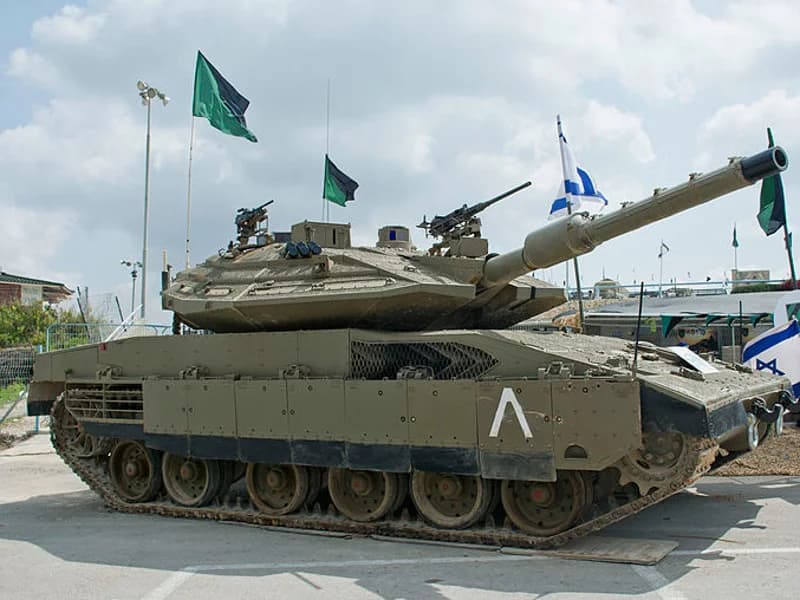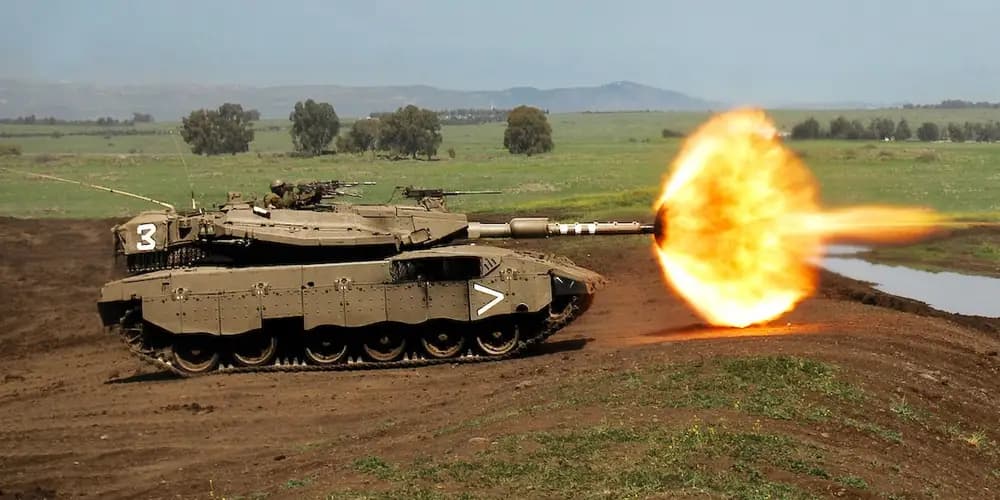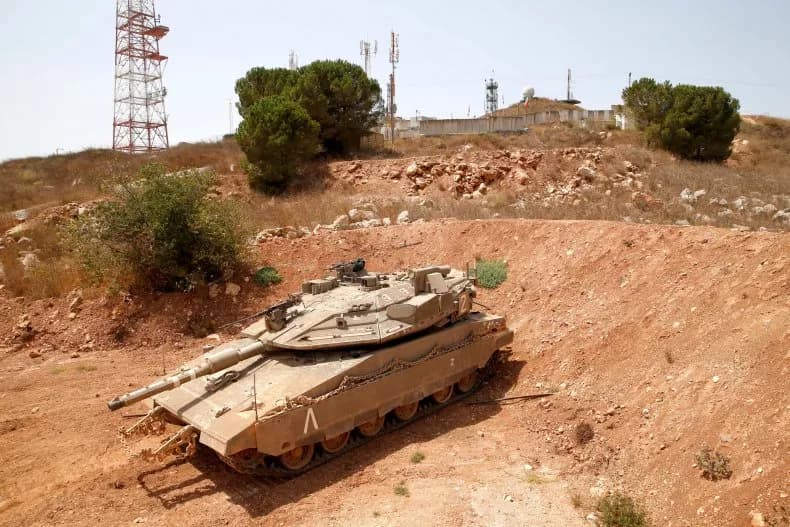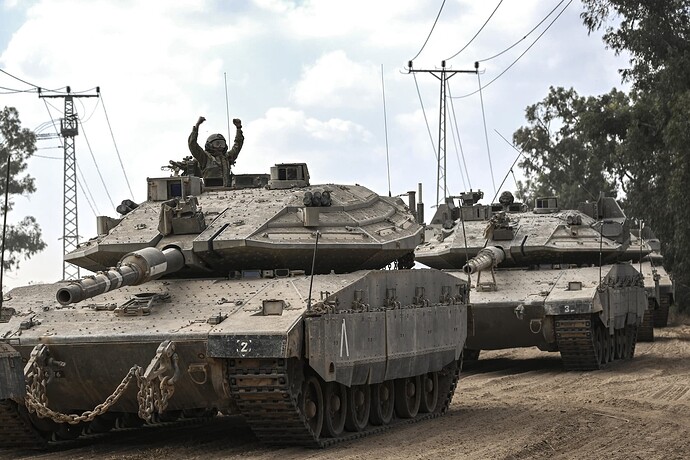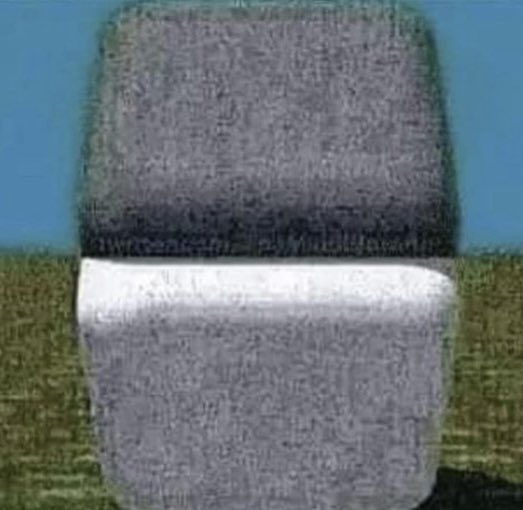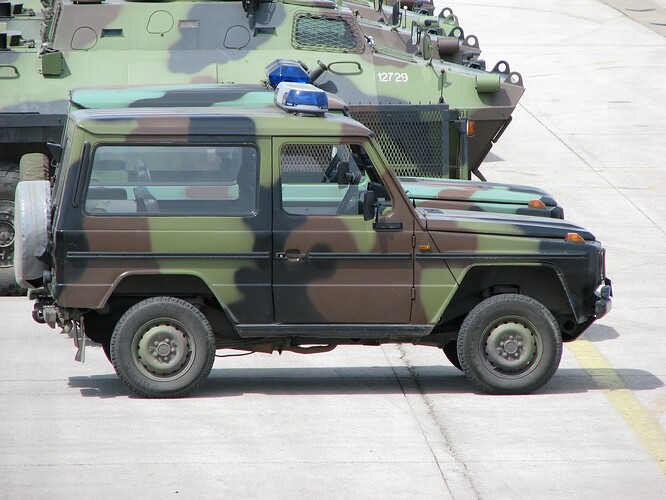I realize this has been asked before, but not really recently. IDF tanks have been painted sand, sand-gray, something that resembles faded field-gray, and brown. Recent photos and videos show Merkavas in the latter two colors. Is that close to the actual colors?
![]()
![]()
This may sound rude or offensive, but this is not my intention!
First of all - painting of military vehicles is by no means “color critical” work - I’m not an expert but my gut feeling says that they are painted using whichever paint is currently available. Different batches of paints could be purchased from different vendors, vendors could change the formula between batches, certain colours could be discontinued and so on. Also exposure to the nature elements will change the color of the vehicle over time.
Second is the way the picture is taken and processed. If series of pictures are taken by a professional photographer and later processed by a professional you could expect consistent results, but there’s not guarantee that they will represent the objective reality - in most cases they do not. In most cases this is not true - most of the pictures are taken using AUTO setting, so…
And third - it really depends on how you are viewing the pictures. A color critical setup (monitor, I/O device, calibration, studio lighting, walls color) can easily set you €30 000 back so I really doubt you have invested such an amount ![]()
Long story short - if it falls somewhere within the lightish grey spectrum - you are OK ![]()
I tried this color blend that cam with the Tiger Models “Nagmachon Dog House Late” kit (thanks to @danielpanev for getting me interested in this kit). The kit calls for using Tamiya Acrylics.
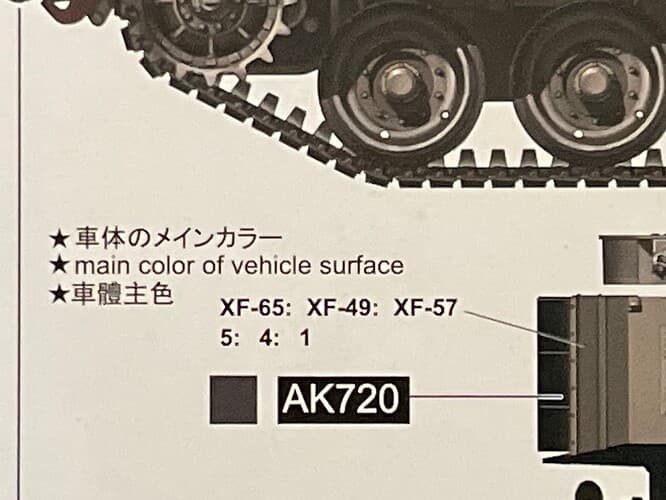
So, I gave it a try…
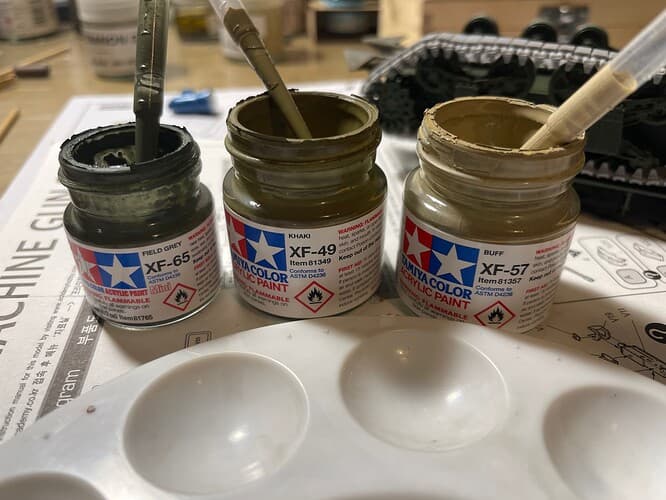
It came out nice; you can tweak the mix according to your liking, but as-is, it’ll get you in the ballpark.
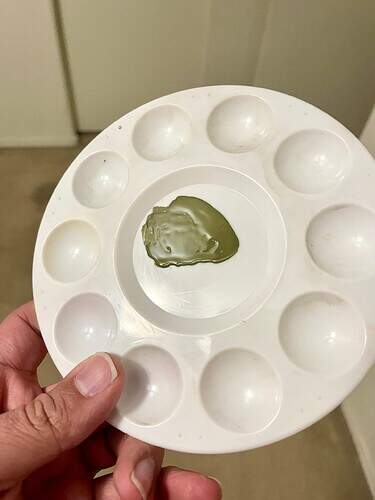
The expression, “the camera never lies”, is in fact a lie. Everything Daniel has stated is correct. There are numerous influences to factor into “that’s what colour?”. Taking into condsideration, age of the paint job, the angle of the sun (time of day), is it cloudy, the influence of the terrain, the time of day, the quality of the camera, the experince of the photographer, shot on film, or digital, developing / processing of the photo, colour corrections, artistic aesthetic… you get the idea. So, basically, what he said ![]() . Pesonally I’ve just resigned myself to trusting the paint manufactures
. Pesonally I’ve just resigned myself to trusting the paint manufactures ![]() … and the advice of those who know better than I.
… and the advice of those who know better than I.
EDIT: It is a sad but sobering truth that most photographs of armor, aircraft, etc., are not taken with a modelers’ need for accurate colour reproduction.
So you’re claiming all the different colors I’ve named above are all one and the same color?? I think not! And I think you missed my point (and my question) entirely.
So these colors are all the same?:
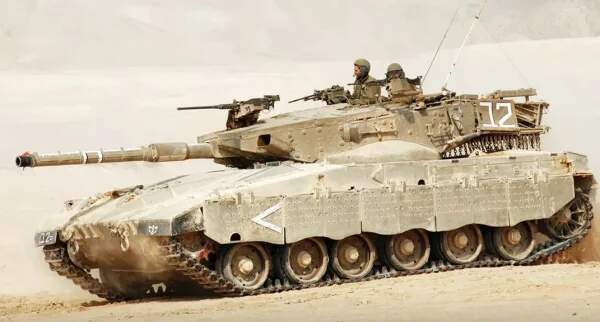
If these are all the same colors in different conditions then the Israelis must have developed the world’s first “chameleon” tank! But seriously, which color is it?
![]()
![]()
Yes and no…
Most western militaries get their paints made to a specific standard at a given time. There will be minimal variations in those paint batches and specifications. So when a new tank rolls out of the factory or a rebuilt one rolls out from the depot, it is painted with the specified paint in service at that time. There are of course exceptions to this, particularly in field expedient or emergency situations, but there are basic standards in paints.
Afterwards though, nature takes its course, and the longer that the vehicle has been exposed to the elements, the longer it has to change from the standard. Sun will fade the paint, Israel, being in a desert area, will have micro fine dust that will embed into the flat finish paint over time, no matter how much a vehicle is washed.
Yeah, then you have the photography angle to induce multiple more variables to the color equation.
I hope that Reluctant Renegade or one of our other IDF veterans can add on to the particulars of IDF paint, but I suspect that he may be a bit busy at the moment if he is there.
Google Mission Model paints, they offer two distinct IDF armor colors, an early that is more that typical sand/tan color and a late/recent shade that has that sand/olive/grey tone. I’m not saying buy theirs (which I did at my LHS) but for mixing your own you could use those distinct colors they offer as a guide.
Sorry to dwell on this point, but all four photos are taken in different light, at different exposures (#3 is somewhat over exposed) and in different enviornments, and in different stages of needing a good wash.
Do note that white is a relative colour. (The are a eleventy gazzilion hues of white - just ask my wife when she decides the base boards need repainting.) The chevrons in all four photos are blinding white. That to me is a red flag that the white balance of these photos is probably off. Hence the variation of the tanks “proper” colour. Also, take photo number three - the photographer most likely exposed /developed the pic using the muzzle flash as the main reference. Note that the white of the flash is completely blown out. And, that is a whole lot of orange flashing back at the tank, It is going to affect the perceived colour, to some degree.
I’m not trying to be difficult here, just trying to point out that there are multiple factors at play when snapping photographs. And these photographs are not taken in ideal photographic enviroments - to state the obvious - to document the actual colour used.
All that said, I have often wondered if the IDF has added a “secret sauce” to there paint that can reflect light / envoirnmental conditions to aid in their camouflagistic (not sure that’s a word, but it sounds cool - say it five times fast) needs. Kind of like those flashy paint jobs you see on some custom cars that change colour depending on the ambient light. Again, pure spectulation on my part. Perhaps I watch too many science fiction movies, or I’m slightly bonkers - which is probably closer to the truth.
AN answer to your question, is most likely that yes, the tanks are all painted the same colour.
The answer is Sinai Grey.
Use pigments to modulate the base colour.
Hi there,
Don’t worry to find the exact color, take the one you most love according to the pictures you find.
The REAL thing is no matter what colour you use, after a day on field ALL the merkava and any other rolling material is covered with DUST, A LOT OF DUST , and that is the real color. It covers all and in the same shade.
I see them all the time, only in winter you can see a lot of mud ( more obscure)
The dust issue is OK for vehicles from the upper center to the south of Israel, in the north there is less dust, more mud and you can see a little more of the greenish colours (olive grey)
Hope this help somebody
To answer your original question first: For painting IDF models you could look at this: https://forums.kitmaker.net/t/modeling-armor-of-operation-iron-swords/34091/62
(I was just the first to answer, do not judge me ![]() - scroll down a little bit for more suggestions)
- scroll down a little bit for more suggestions)
On the other hand - let me ask you a different question: are those two colours different?
Now place a finger (or two) over the center line and answer again
Just to add to the previous observations regarding batches of paint:
Two Puch Jeeps in the foreground WERE painted with the same green paint produced by two different factories. During the time, one was altered due to some componennts used, so the large ammount of Serbian armed forces at one point looked fifferently. Needles to say that this resulted in larges overpainting of vehicles after Germany’s decision to shift from PzGrau to Pz Gelb.
You should, of course, look for a proper guide to currently used color, but its final outlook will be affected by factors we couldn’t anticipate, but can be used as a good excuse for modulation on our vehicles.
Happy modelling
Taken to the extreme, every IDF vehicle is painted a different colour, or so it seems in photos.
Very true! It’s amazing how quickly light conditions can vary in Israel.
![]()
![]()
I finally got around over the weekend to paint two of my Nagmash APCs. I used a blend of Tamiya Grey, Buff and Dark Earth to replicate the modern shade of IDF sand grey.
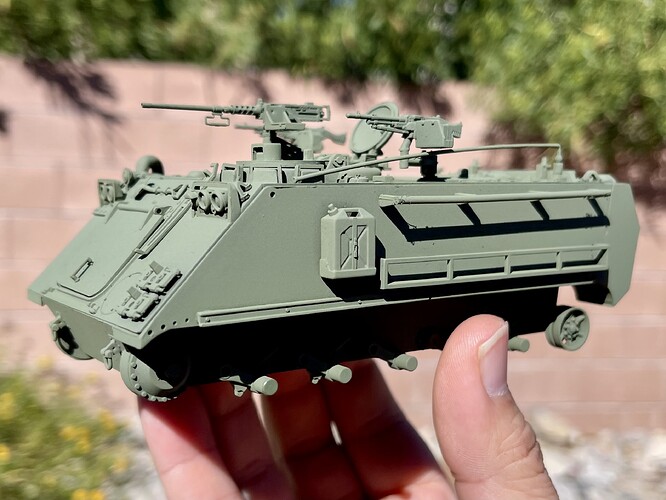
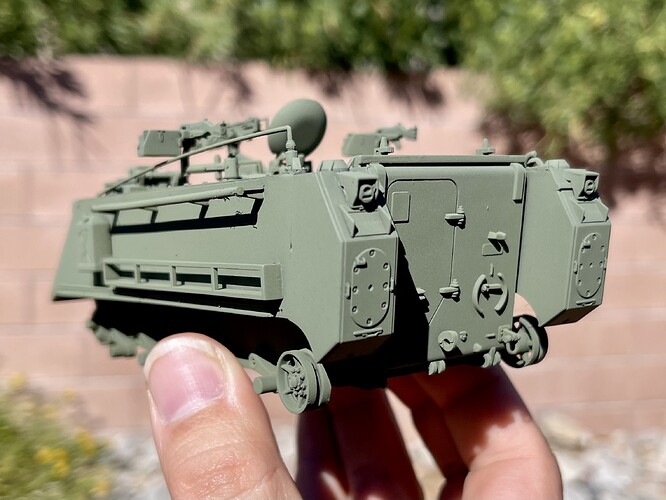
This is what the shade came out; took it outside to see how the color looks under sun light…
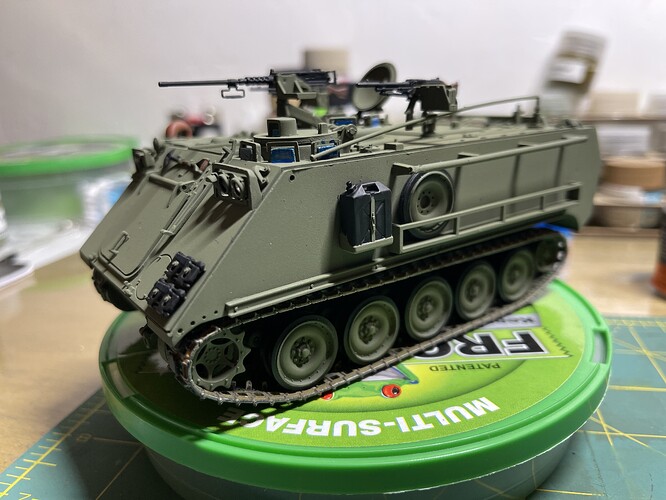
Then took this one while in the bench doing detail painting, I will be clear coating this and them do some weathering using AK Interactive washes.

Using pictures of the current conflict in Gaza as reference…
Trying to nail the shade will always be a challenge because of subtle variations in color, which is the bane of a modeler’s existence.
I’m thinking Field Gray is close.
If you use Tamiya try a 50:50 mix of medium grey and buff. XF20 and XF57.
